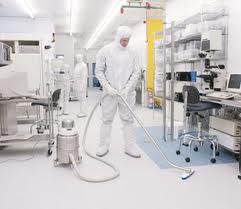Tips to Vacuum Your Cleanroom
May 28th, 2013 // 3:31 pm @ jmpickett
Latest FDA and cGMP Compliance News
As most pharmaceutical professionals know, every inch of your cleanroom has to be completely pristine to avoid contamination problems and cGMP violations. You need to regularly decontaminate your:
- HEPA filtration devices
- Sprinkler heads
- Ceiling panels
- Lighting units
- Glass surfaces
- Piping systems
- Floors
- Manufacturing equipment
You also should monitor the ambient air and keep it maintained at the right levels. Ventilation systems that are HEPA filtered will help you to limit any airborne contamination. But, to make sure that your clean room environment is pure, you will need to engage in some regular housecleaning.
- June 27 – Audit Your Lab Like an FDAer
- June 12 – Avoid Warning Letter Disasters with a Strong cGMP Quality Agreement
Using a vacuum that is HEPA filtered and also regular wipe downs are the standard ways to clean the typical clean room. However, in serious cleaning situations, vacuuming is often the best way. Particles are contained in the machine with very little chance of being put into the air by exhaust. Vacuuming also cuts down on the fiber particles that your wipes and swabs may miss. As a matter of fact, measurements in one clean room determined that a dusting system that utilized throw away clothes actually polluted the area 2 times as much as a system that had a HEPA filtered vacuum cleaner.
What Your Cleanroom Vacuum Should Include
First of all, any vacuum that is used in a clean room should be HEPA filtered to make sure that at least 99.97% of particles, including 0.3 microns are properly collected and retained. Also, it is important that the HEPA filter is installed behind and after the motor that filters the exhaust stream. Note that the commutator and carbon brushes in the motor will create dust. If the exhaust stream is not properly filtered, the dust is then released into the cleanroom.
Remember that not all HEPA filtration systems are the same. You should make sure that your selected vacuum has a multi stage, graduated filter for the best operating efficiency.
A filtration system that is graduated uses several filters that are progressively finer. These filters trap and keep particles as they go through the vacuum. The biggest particles are caught by the coarser filters, and the smaller particles are caught by the finer filters.
Such a multi-stage system will protect your HEPA filters from wear and tear and blockages. If your vacuum has an ULPA filter, your system should keep up to 99.99% of ultra fine matter and particles, and down to/including 0.12 microns.
Also, your filtration system show have filters that are oversized. This will reduce airflow across the larger surface areas and provide the optimum air to cloth ratio. This will allow your vacuum to collect the most debris volume over long periods of time and you will not have to do much maintenance.
Your vacuum to be used in the cleanroom should be made of materials that will not generate any particles. A good choice is a non porous, stainless steel product that has smooth attachments and hoses. This allows employees to wipe them down for fast decontamination, easier sanitation and better validation. The vacuum also has to have special packaging to stop contaminants from coming into the cleanroom when the product is delivered.
And remember, your vacuum should be able to handle both wet and dry collection.



